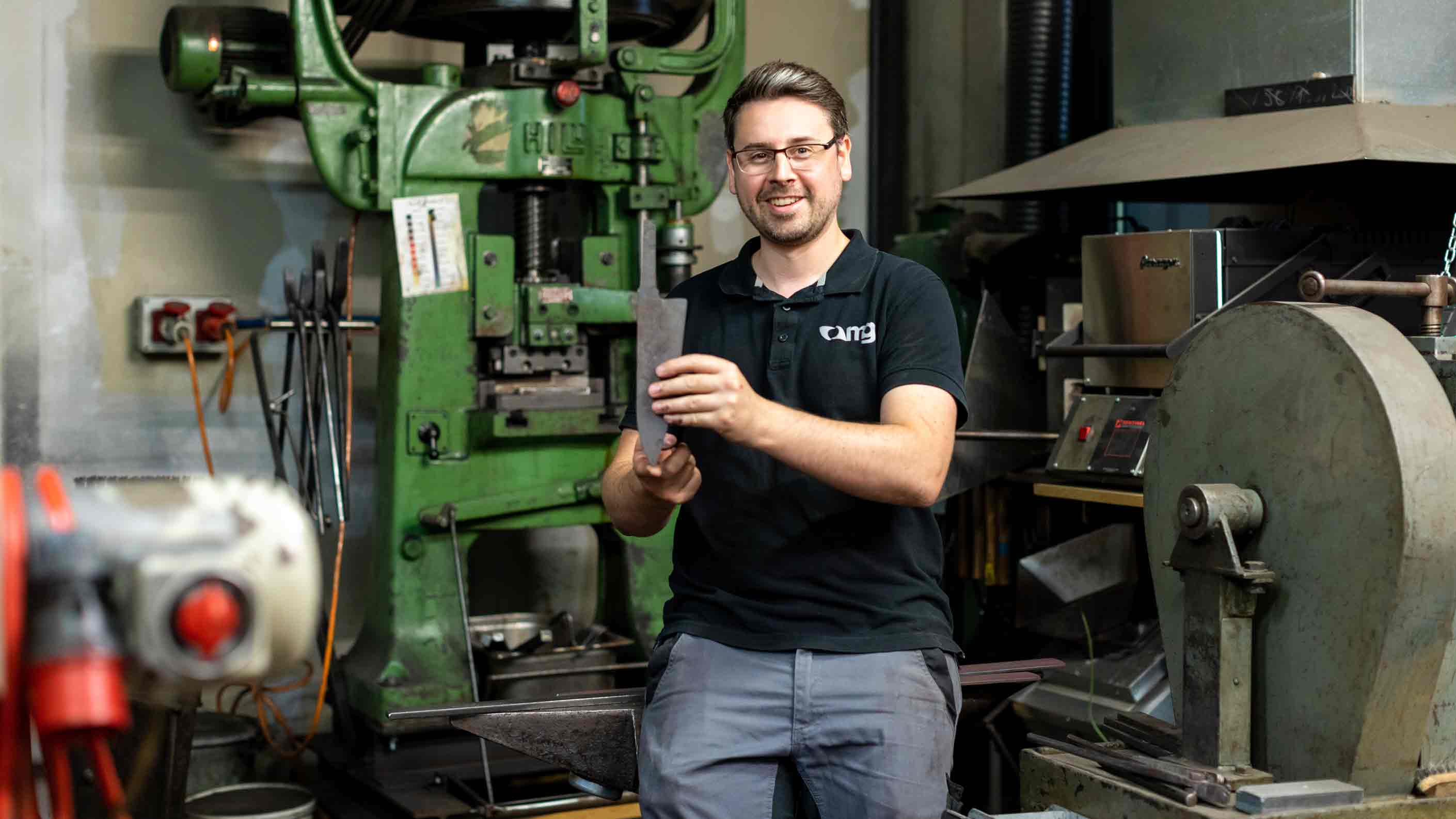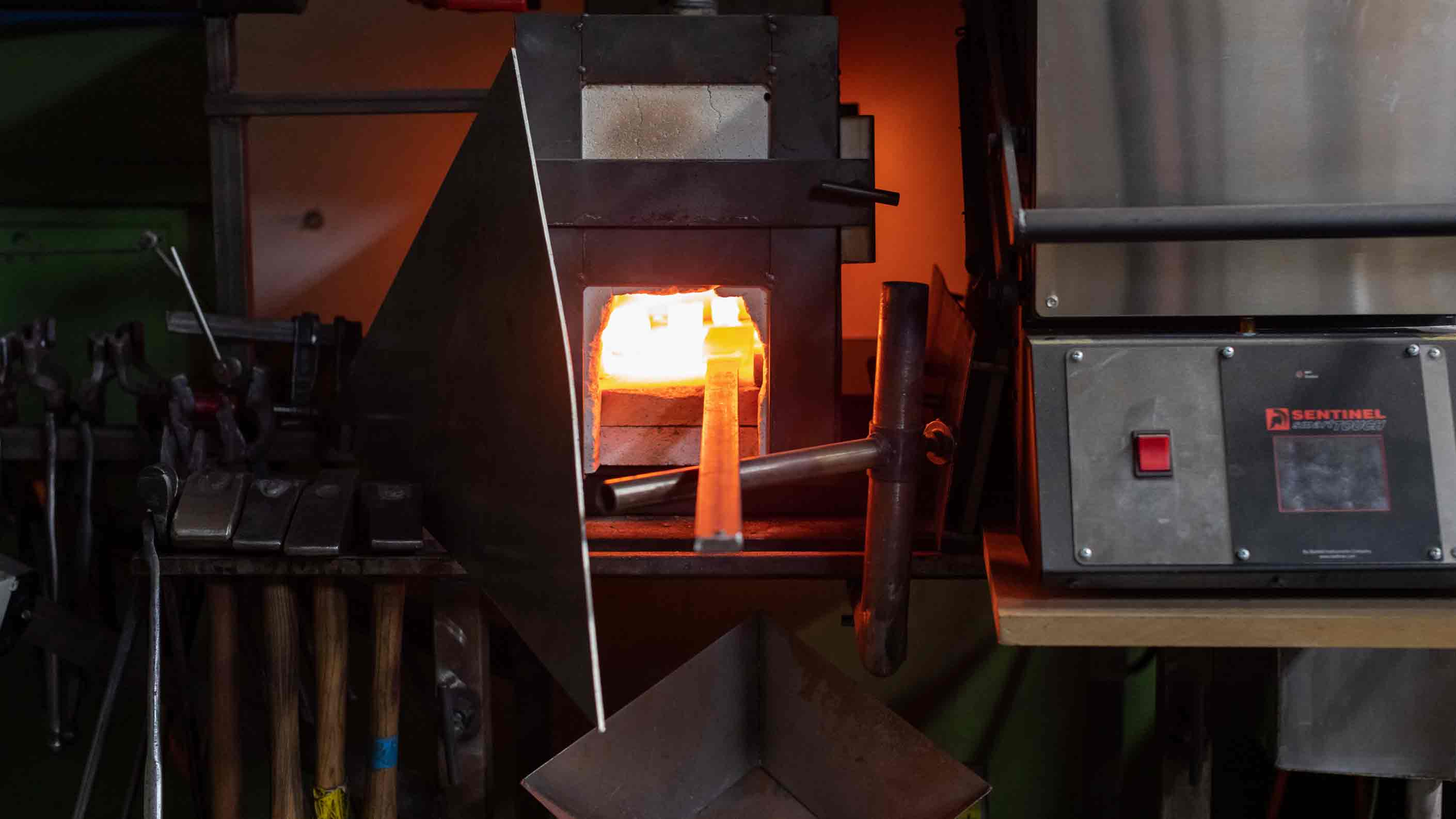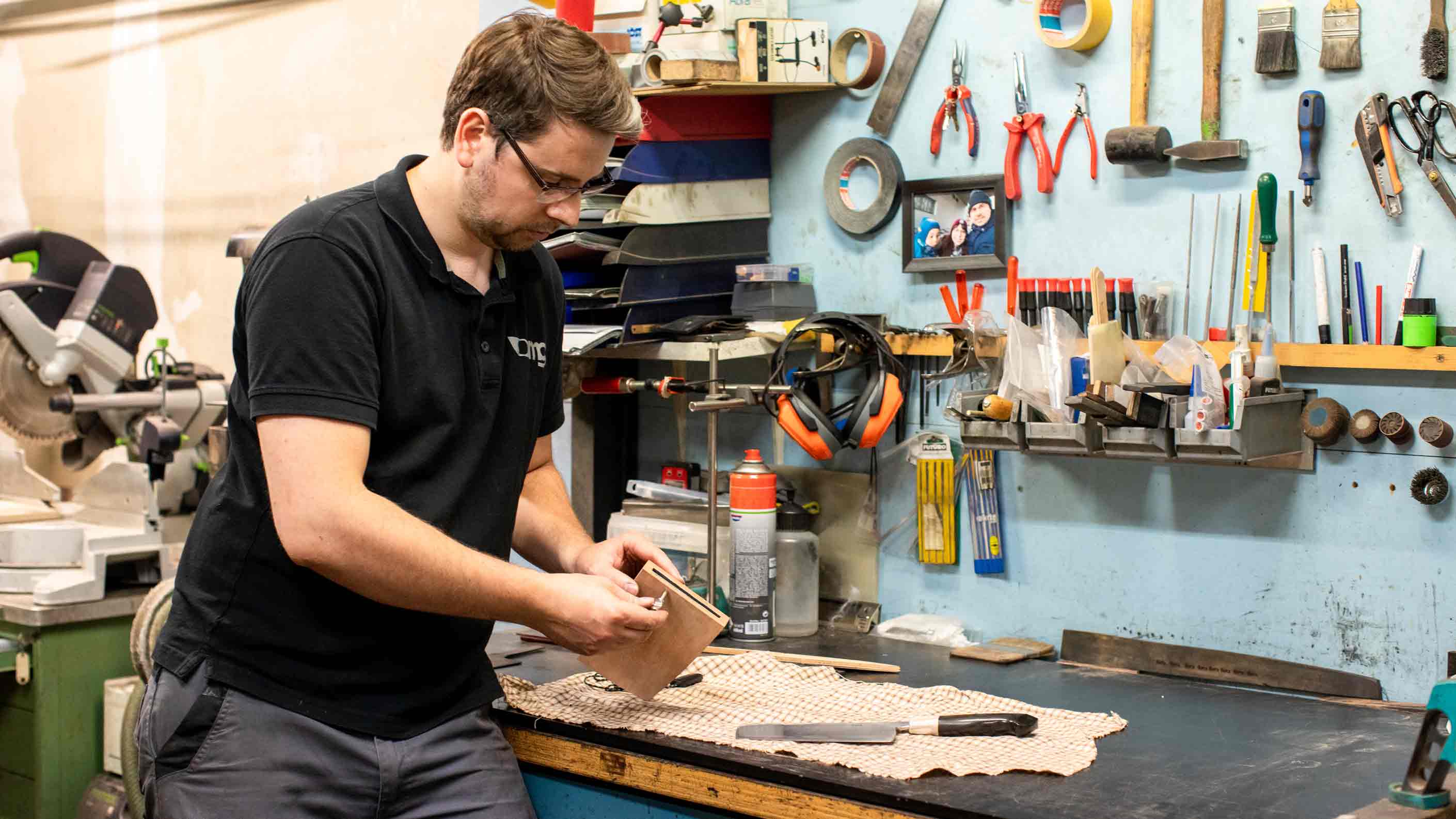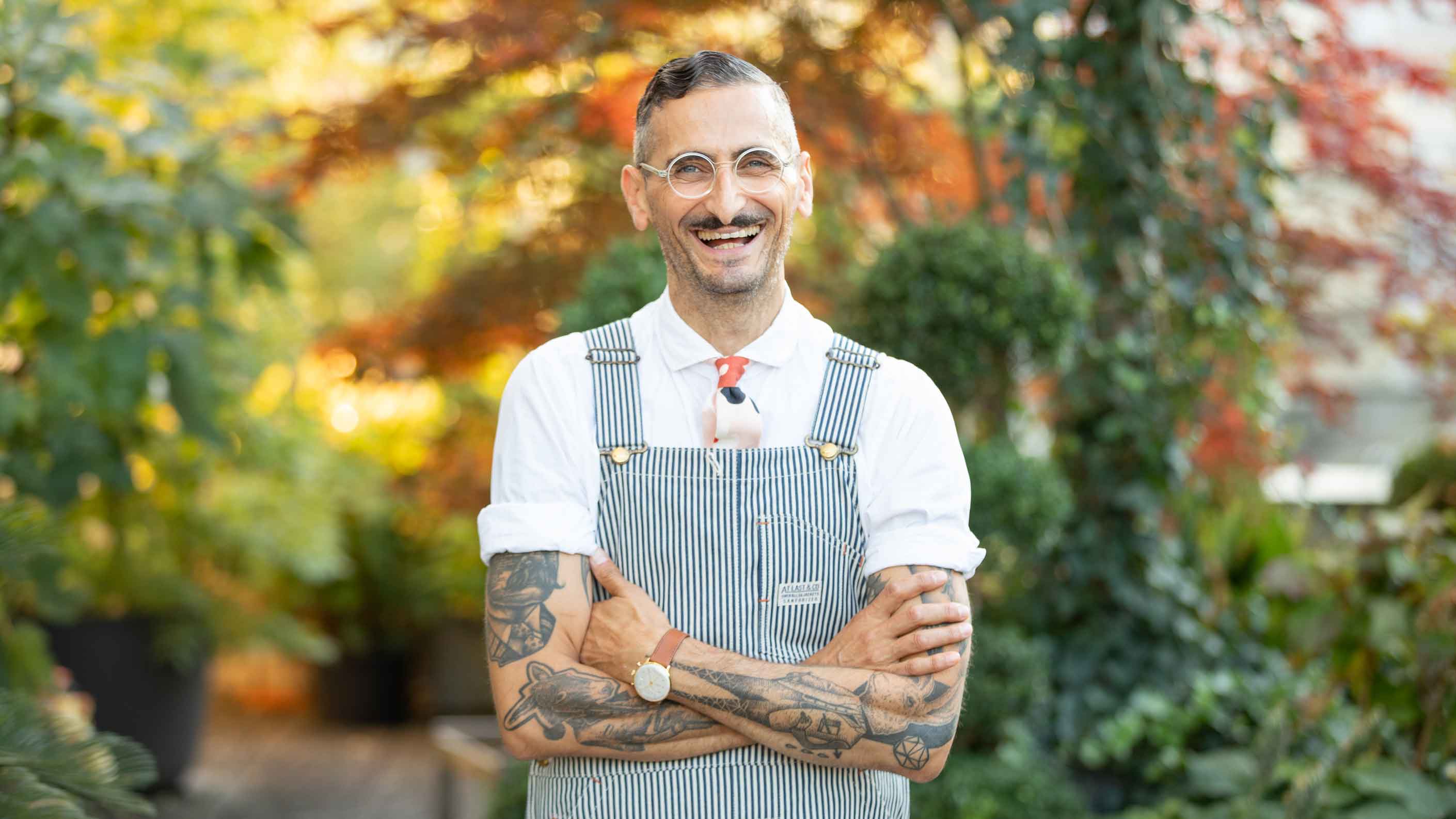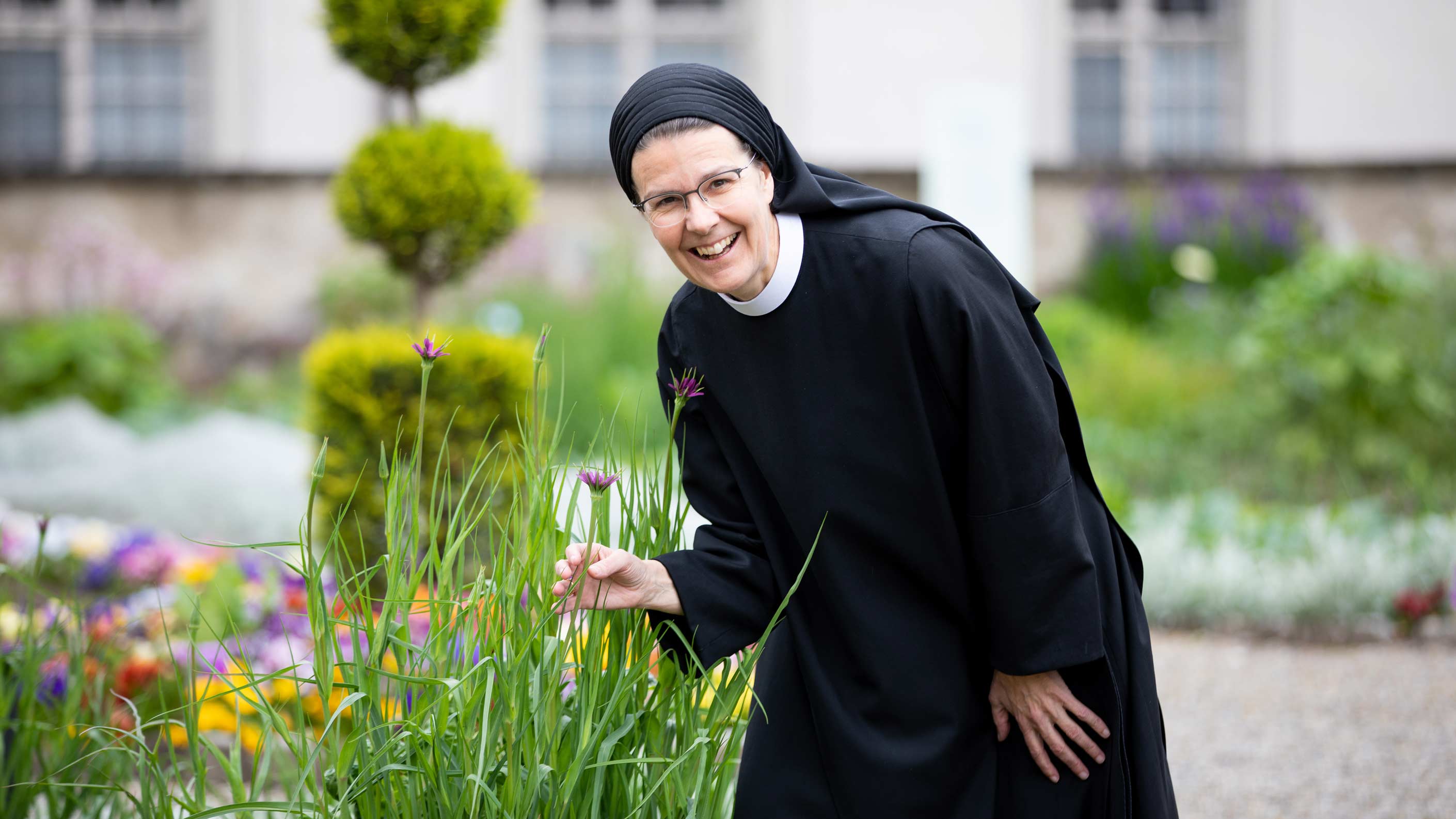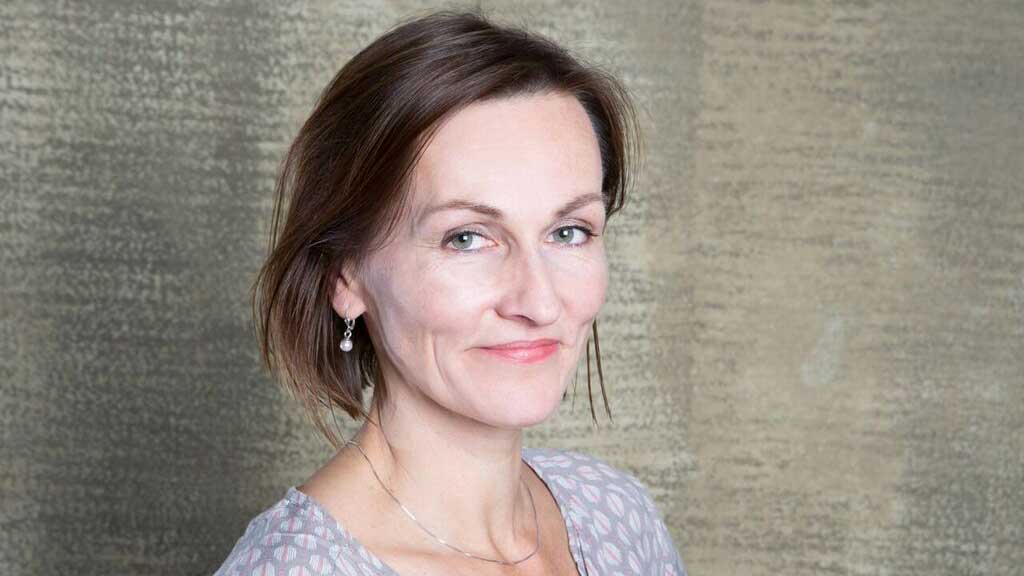People & Living | Unusual professions
Kitchen knives for life
Zurich people with unusual professions. Marco Guldimann is a knife-maker. At his workshop in the Zurich district of Schwamendingen, he produces truly unique knives for top chefs and ambitious amateur cooks. His blades are greatly sought-after, even though Marco himself has not actually completed a formal apprenticeship to become a knife-maker: every step in the process has been self-taught. A conversation about a profession that is said to be dying out.
Marco, how did you become a knife-maker?
For years, I worked as a cook and in the catering sector, and I took a keen interest in the subject of kitchen knives. Over the years, I then started getting more involved with that area in my spare time and making my first blades. I never completed an actual apprenticeship, and this means I do not identify myself officially as a trained knife-maker. I taught myself virtually everything independently and spent more and more time making knives as the years passed. I now do it full-time and specialise in the niche area of kitchen knives.

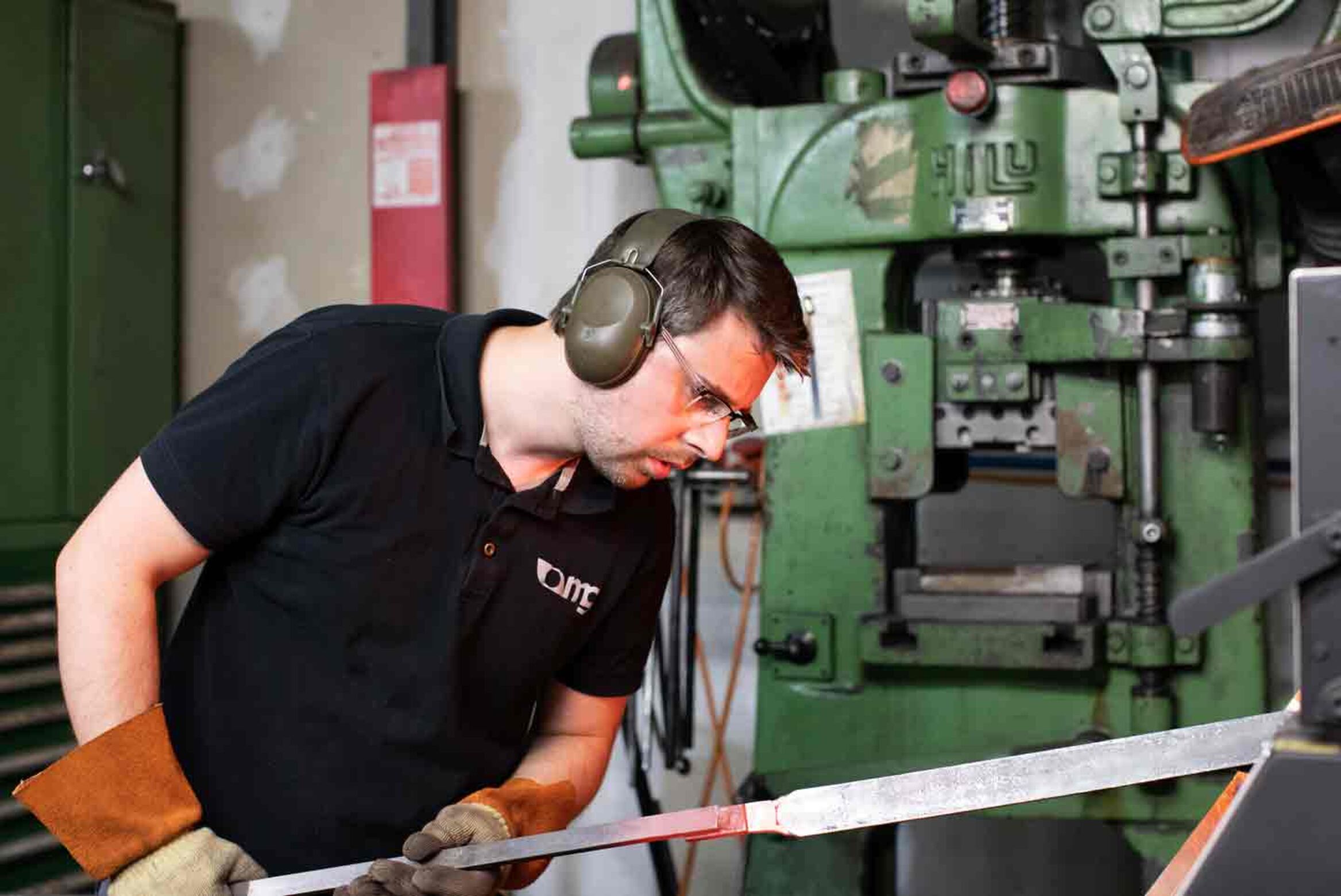
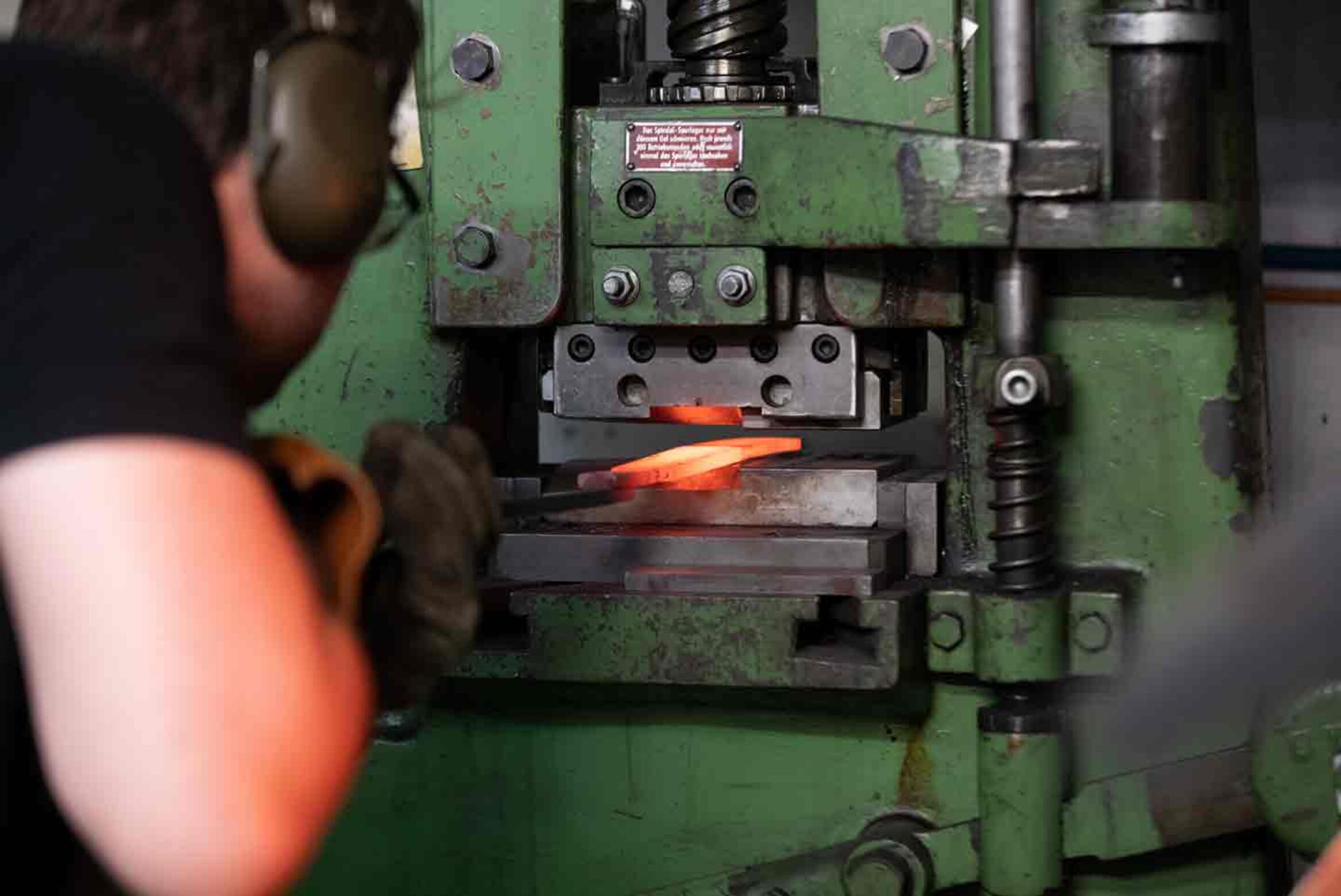
What do your tasks as a knife-maker involve?
What I make consists almost entirely of individual and bespoke items requested by customers. For example, a lot of cooks come to me and we then try to design the perfect knife for them together.
What makes a good knife?
The most important feature is definitely edge retention, which means the blade’s resistance to wear and tear. A knife has to perform its function easily, and it has to be well balanced and easy to control. Next, of course, design and aesthetics have to be considered, although it should not be forgotten that a knife is and remains a working tool.
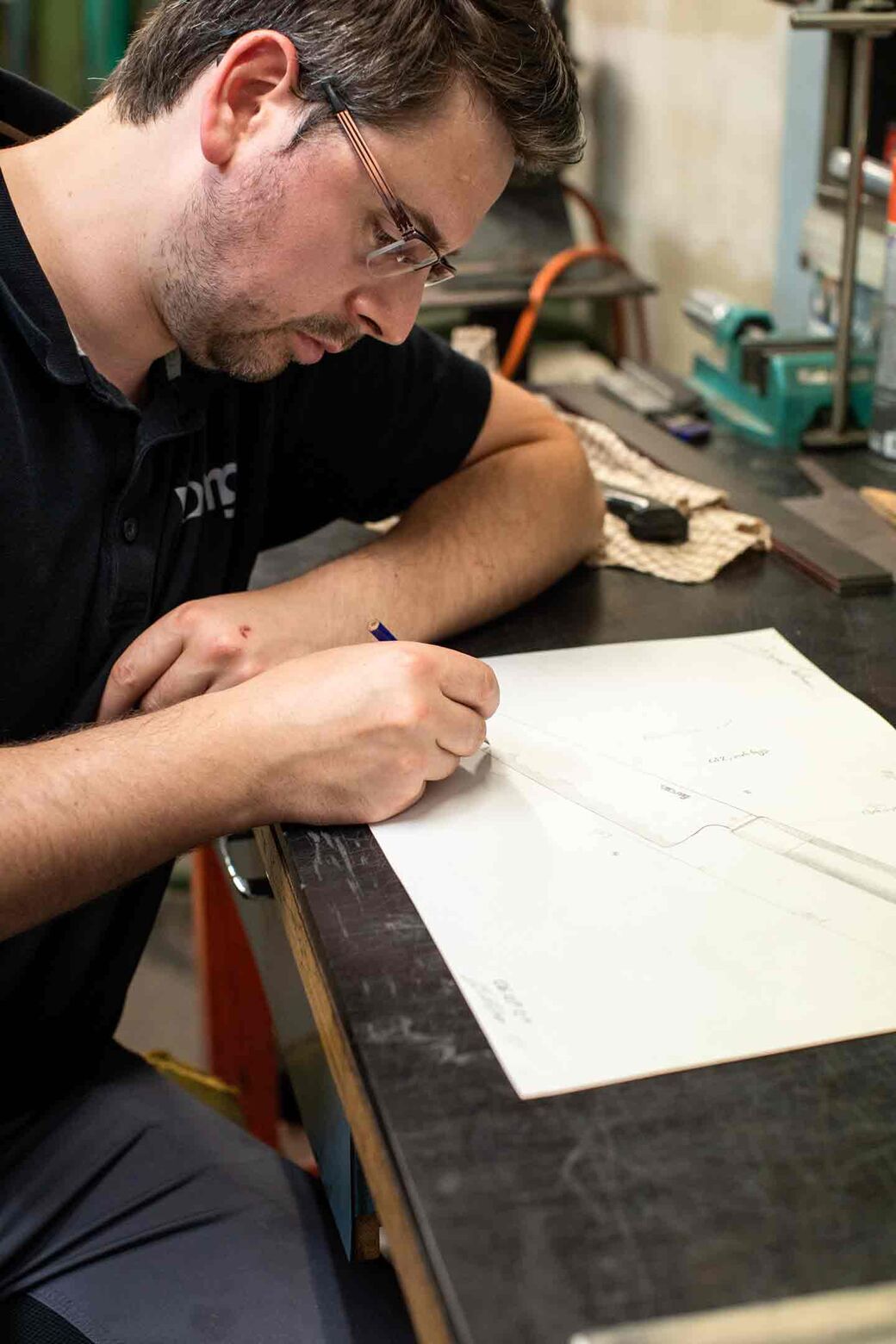
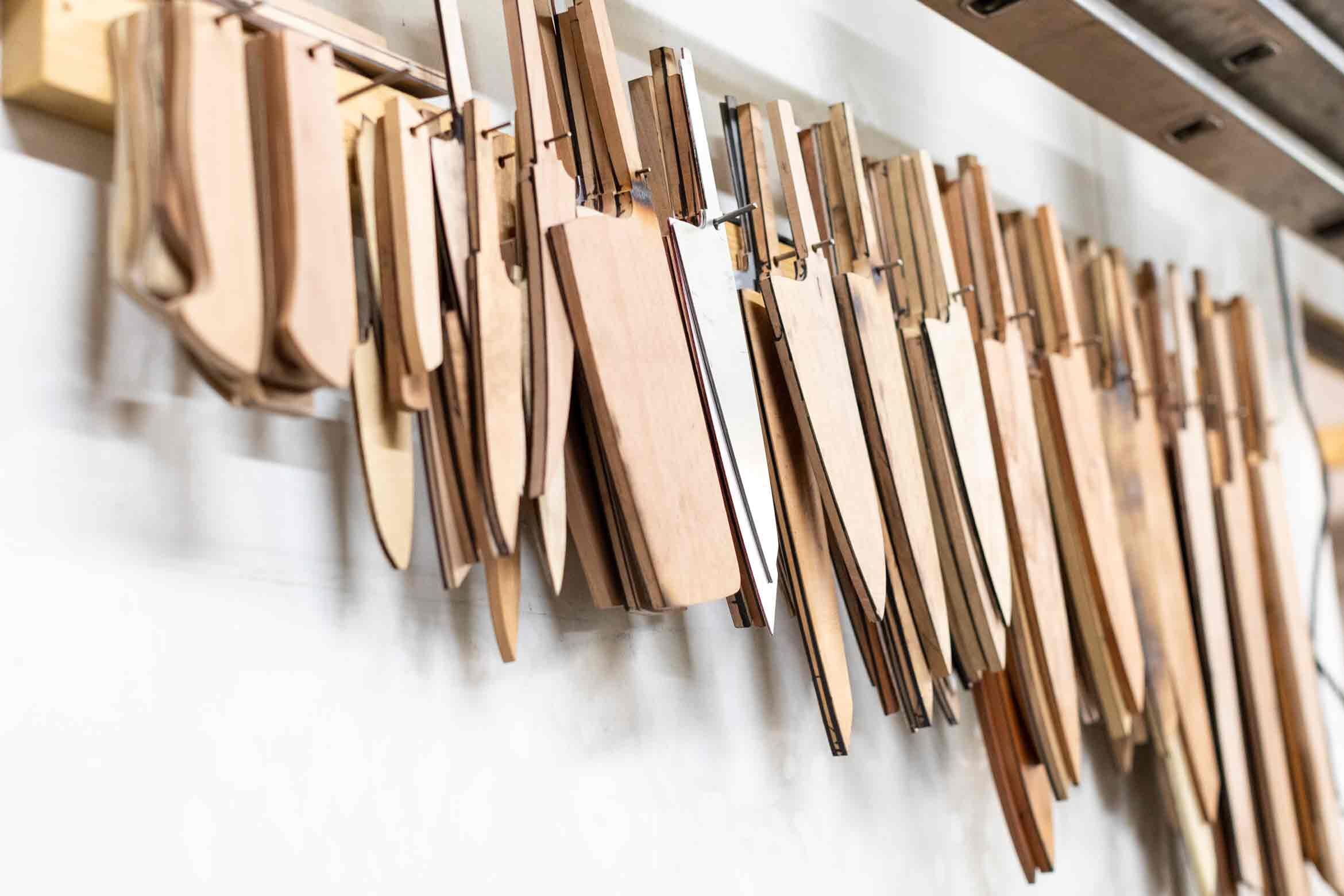
‘My knives simply require more care than an industrially produced product.’
What do you mean by that?
For example, it is very important to me that there should be no open spaces on either the blade or the handle, where micro-organisms or bacteria could collect. I need to emphasise here that my knives are not rustproof. This means that after it has been used for cutting, the knife has to be rinsed and thoroughly dried. Such a product simply requires more care than an industrially produced knife.
Does this mean your knives are usually one-offs?
Exactly. When somebody wants a knife from me, we have a fairly long talk about the blade, and then we decide together which knife is most suitable, in terms of shape, size, weight and design.
‘Being in my workshop simply casts a spell over me.’
What do you like most about your work?
That is hard to answer. Being in my workshop simply casts a spell over me. To give you one example, I also deliver courses in knife-making. In these courses, a knife is made to measure, complete with handle and sheath, and the participants have to actually perform almost all the steps themselves, with me just offering support. But sometimes I catch myself thinking that I would most like to be doing it myself. My fingers start to itch, and I get fired up. The most wonderful part, however, is when you come to the end of a long process of work and are able to hold a product in your hands. That is incredibly pleasing.
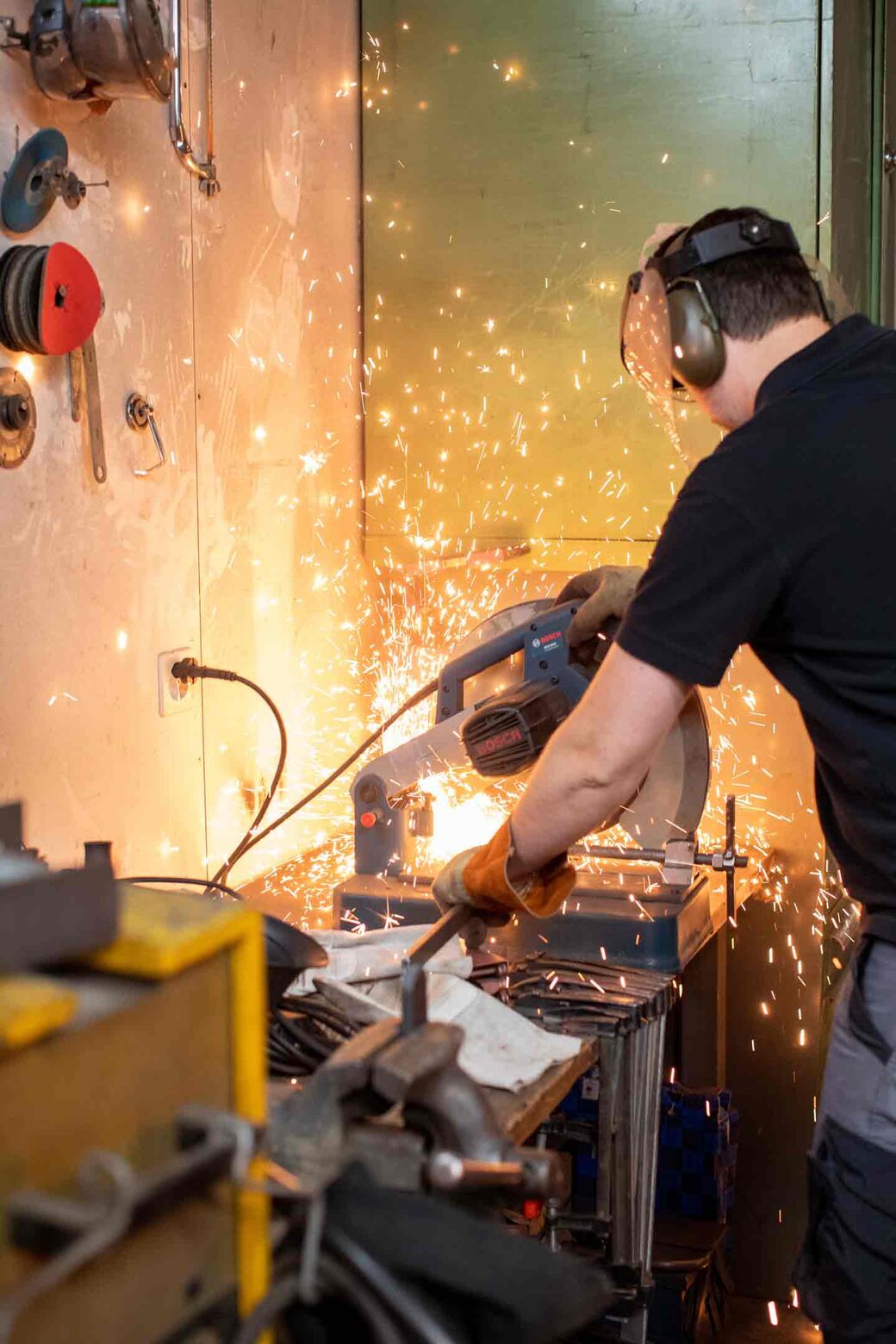
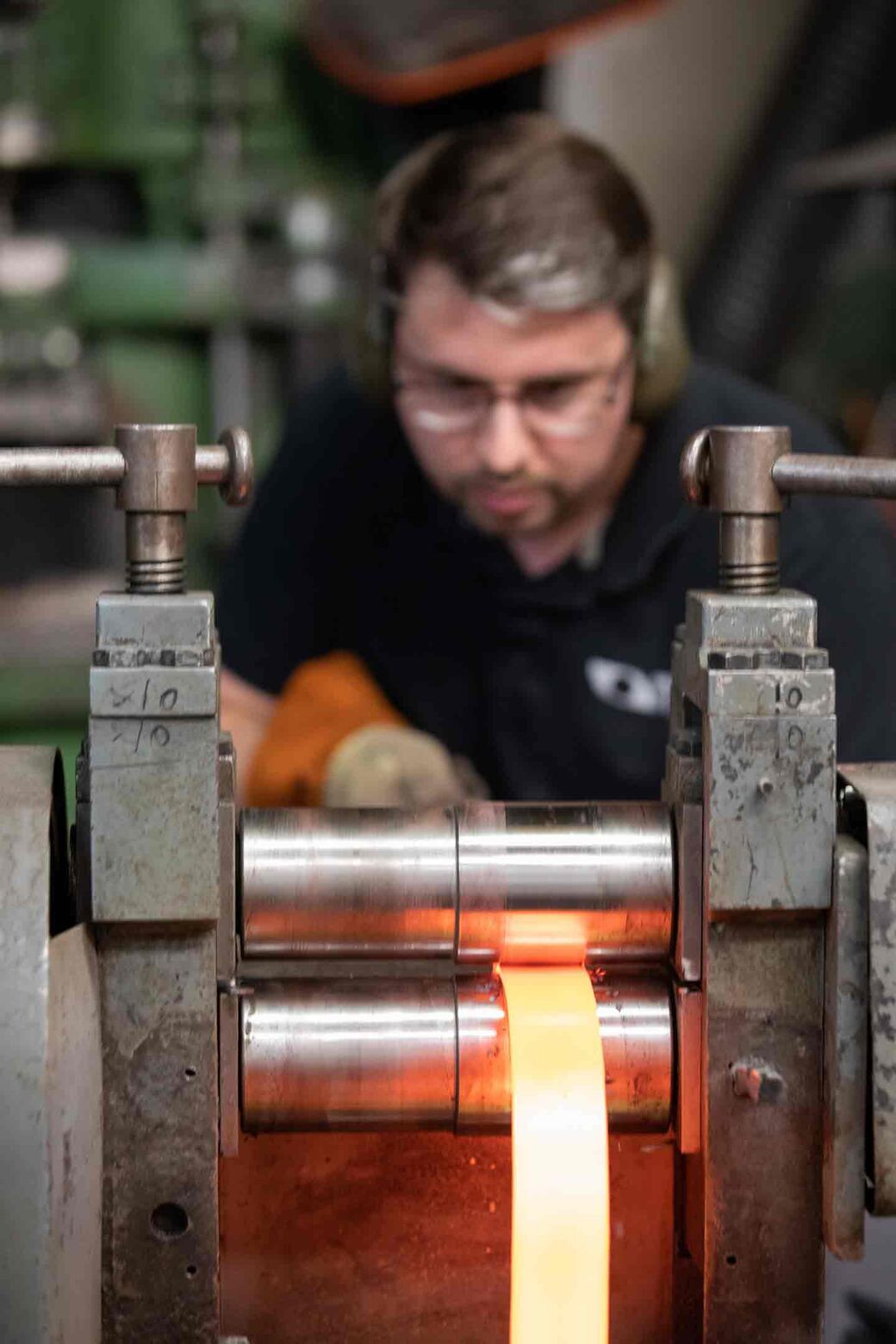
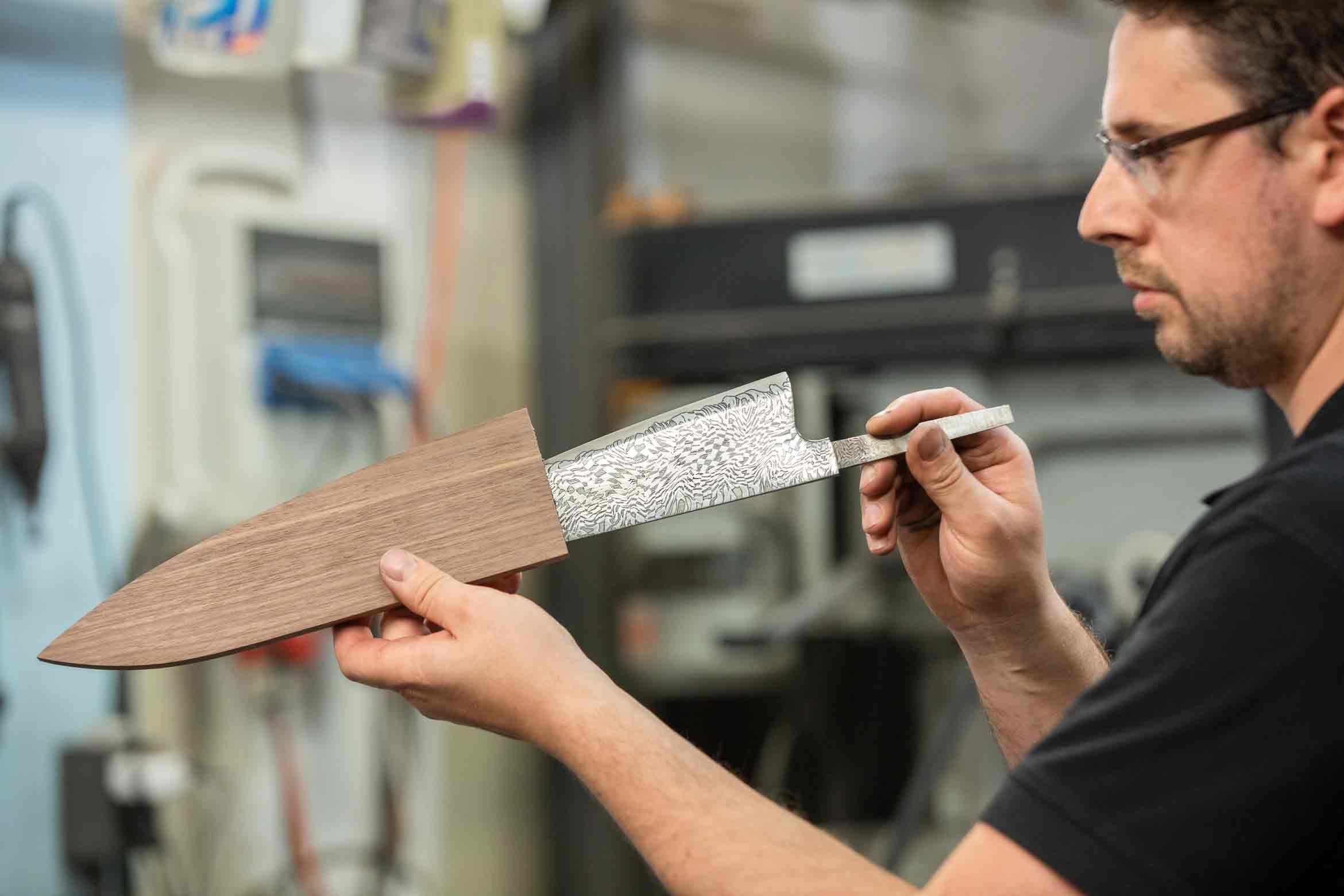
How much time do you need to produce a finished knife?
That depends on what the individual customer wants. As a rule, I spend about 20 to 60 hours working on one knife.
And you perform every step on your own. That sounds very hard, doesn’t it?
But it isn’t. On the contrary, I love this work. Often, I am so focused that I almost fall into a kind of trance and forget completely about the world around me. If somebody then happens to walk into the workshop, I sometimes get a fright because I am so absorbed in my work.
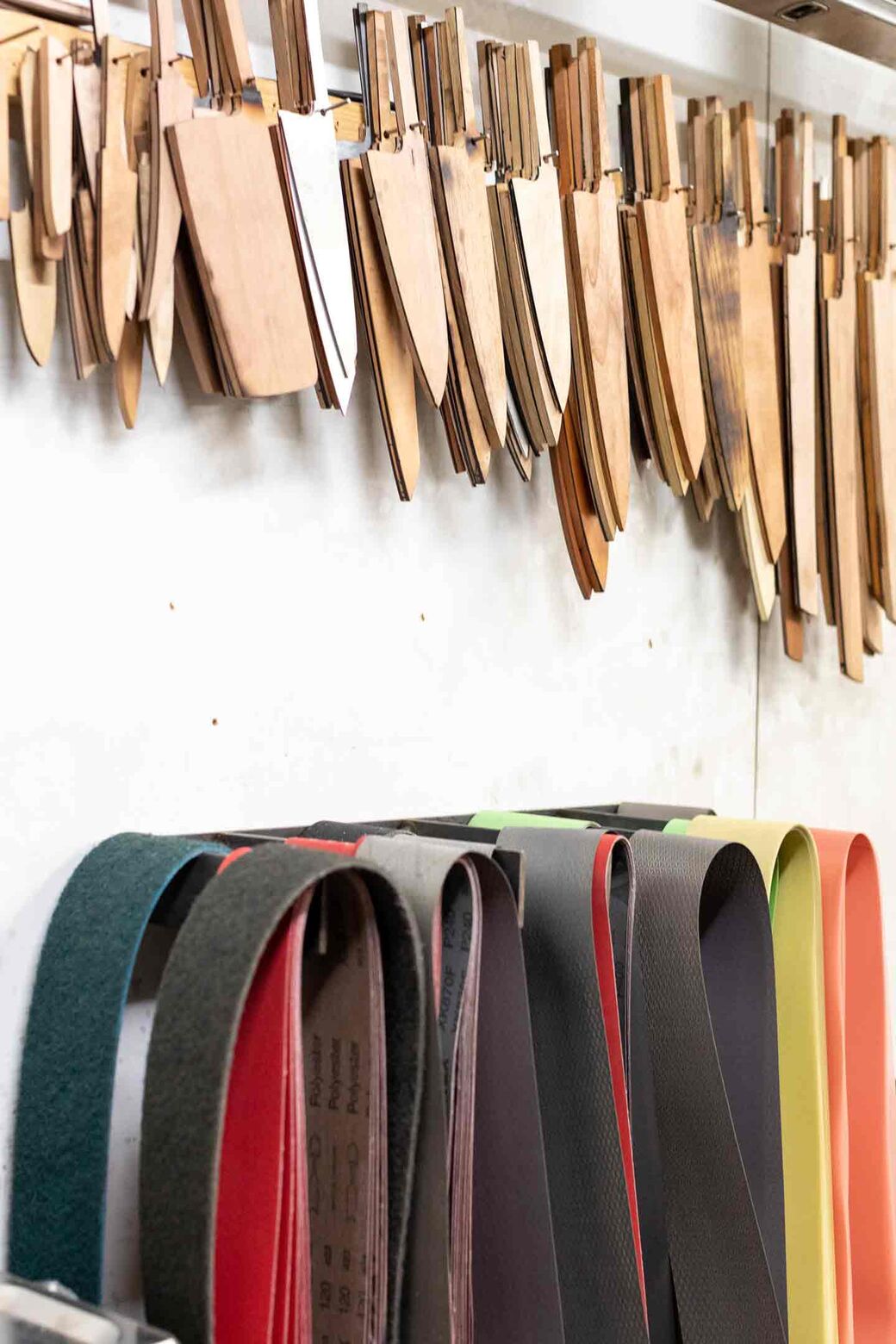
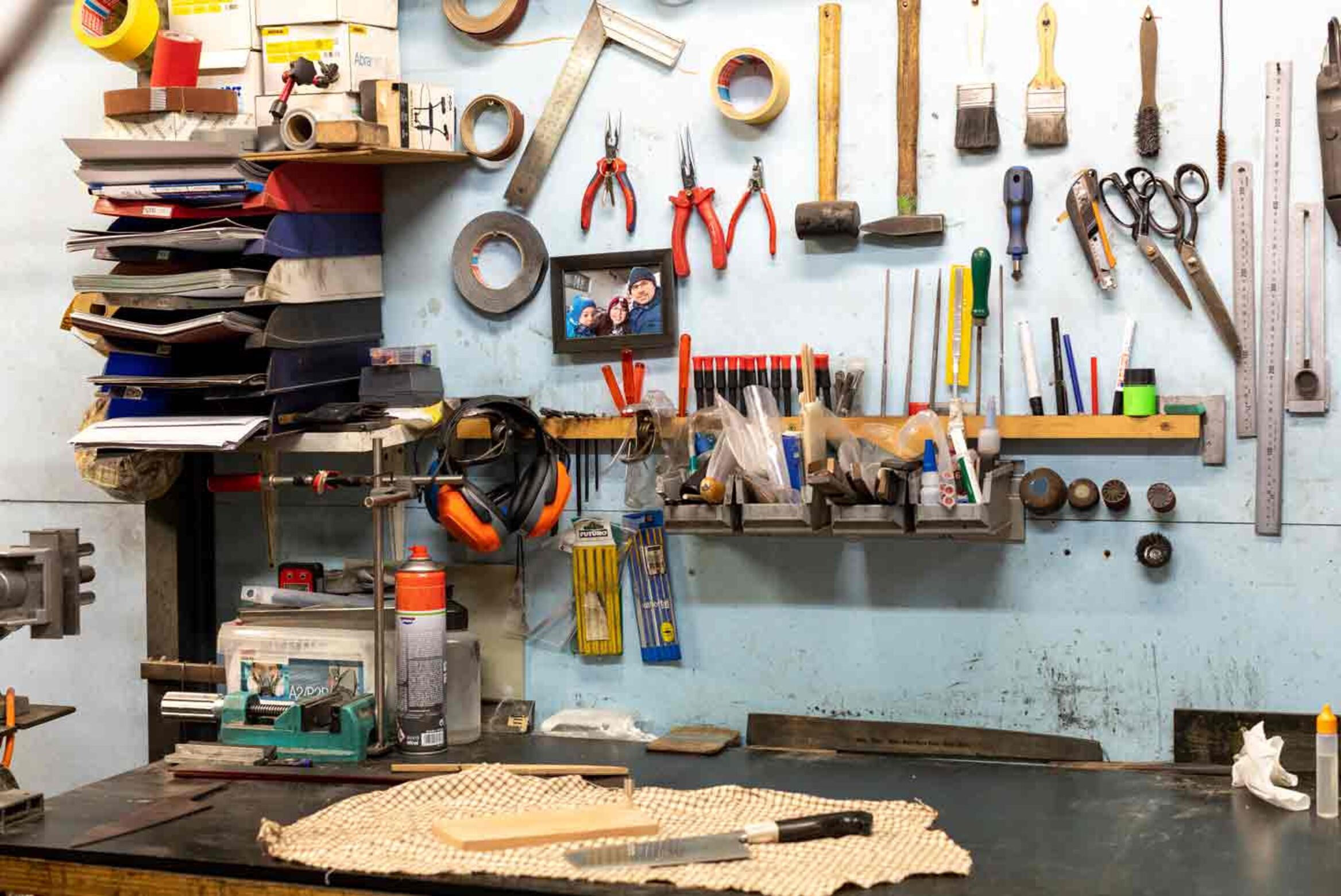
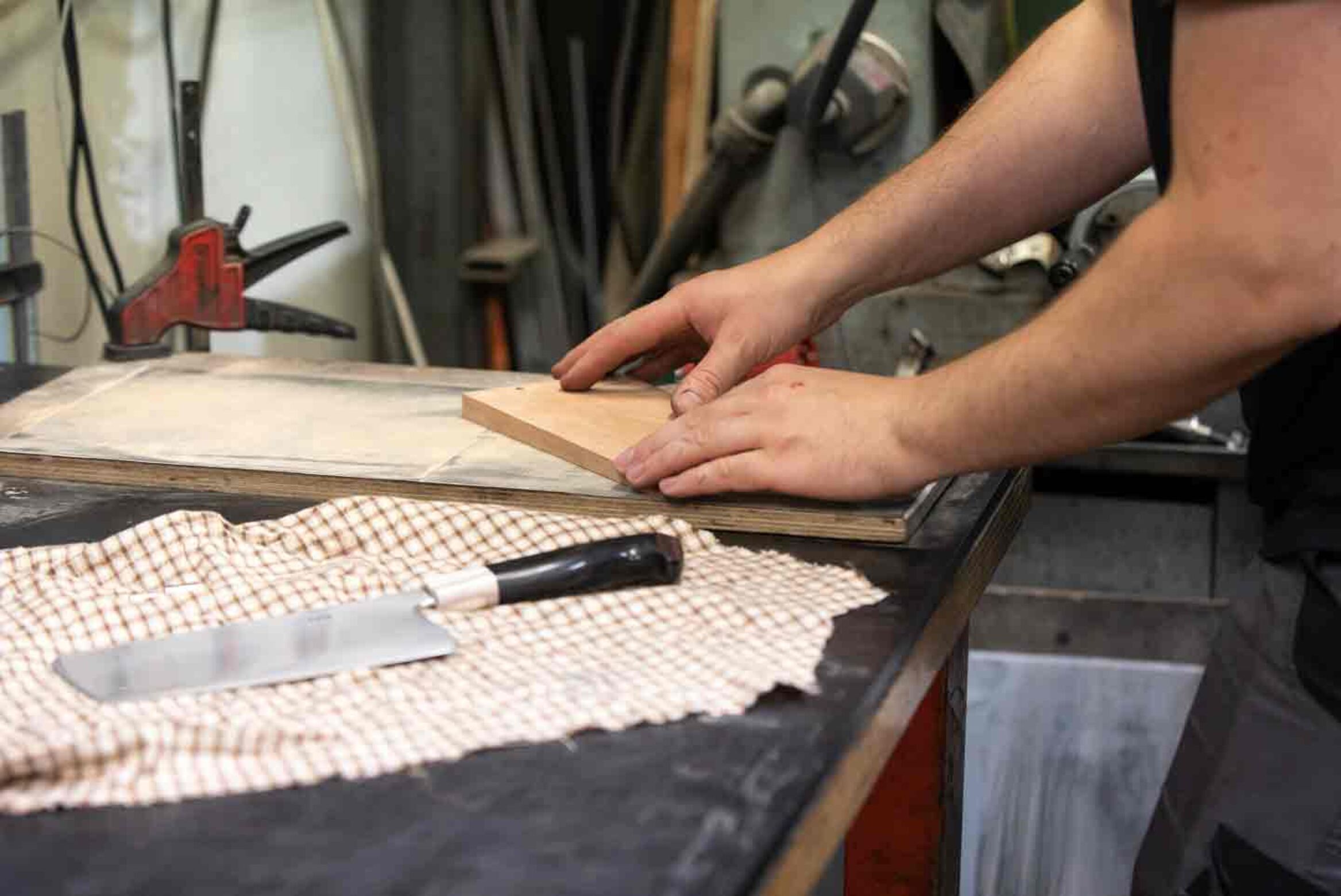
‘The patterns are created by the technique known as damascening.’
If you look at the various knives on your website, you can see on many of them a kind of wave pattern on the blade. Where does that come from?
These patterns are created by the technique known as damascening, from which we also get the name ‘Damascus knife’. This means that I duplicate different types of steel structure by pressing them together. As soon as I then put the blade into acid, the different structures also react with the acid in different ways, creating the contrast – and that then produces this beautiful pattern.
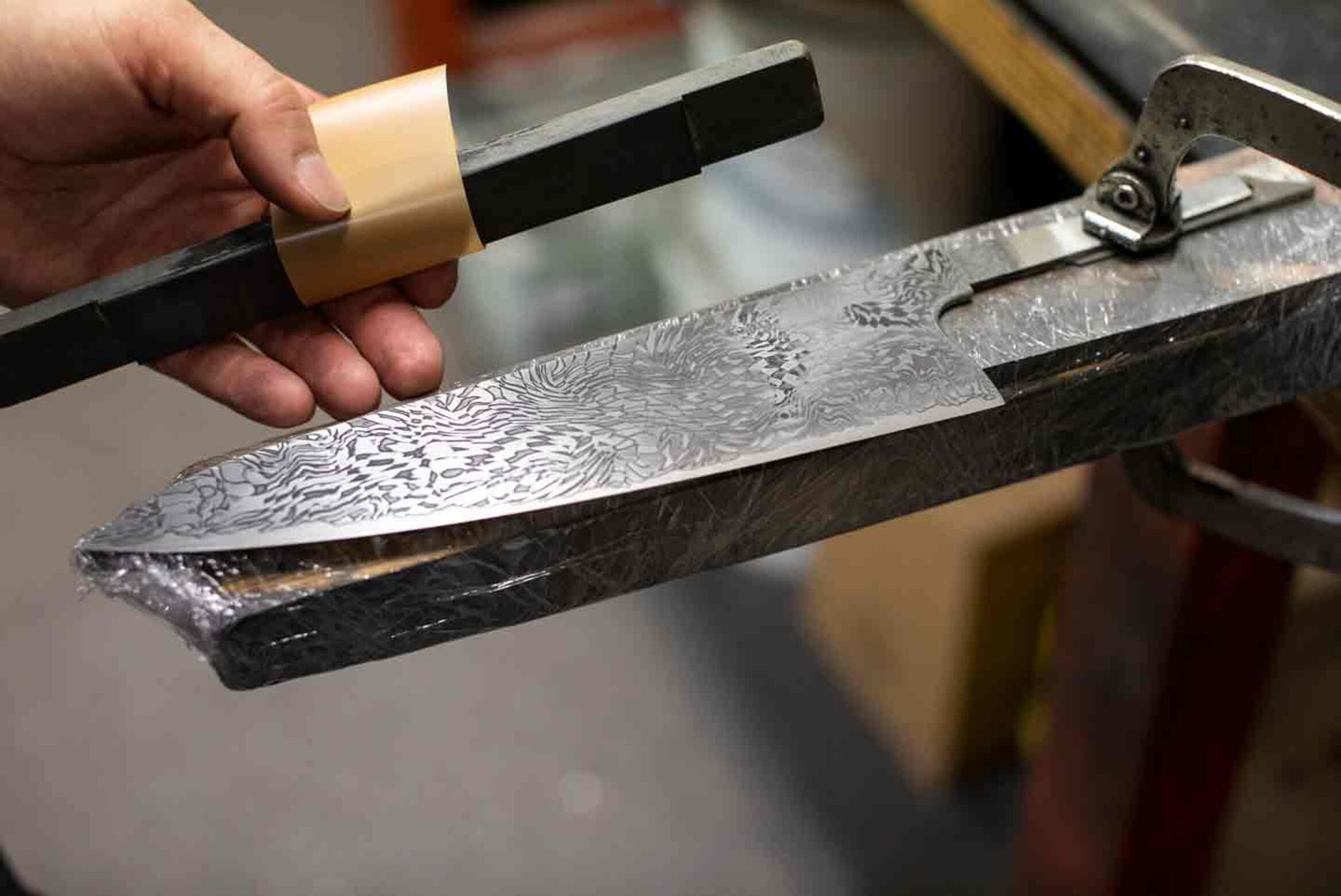
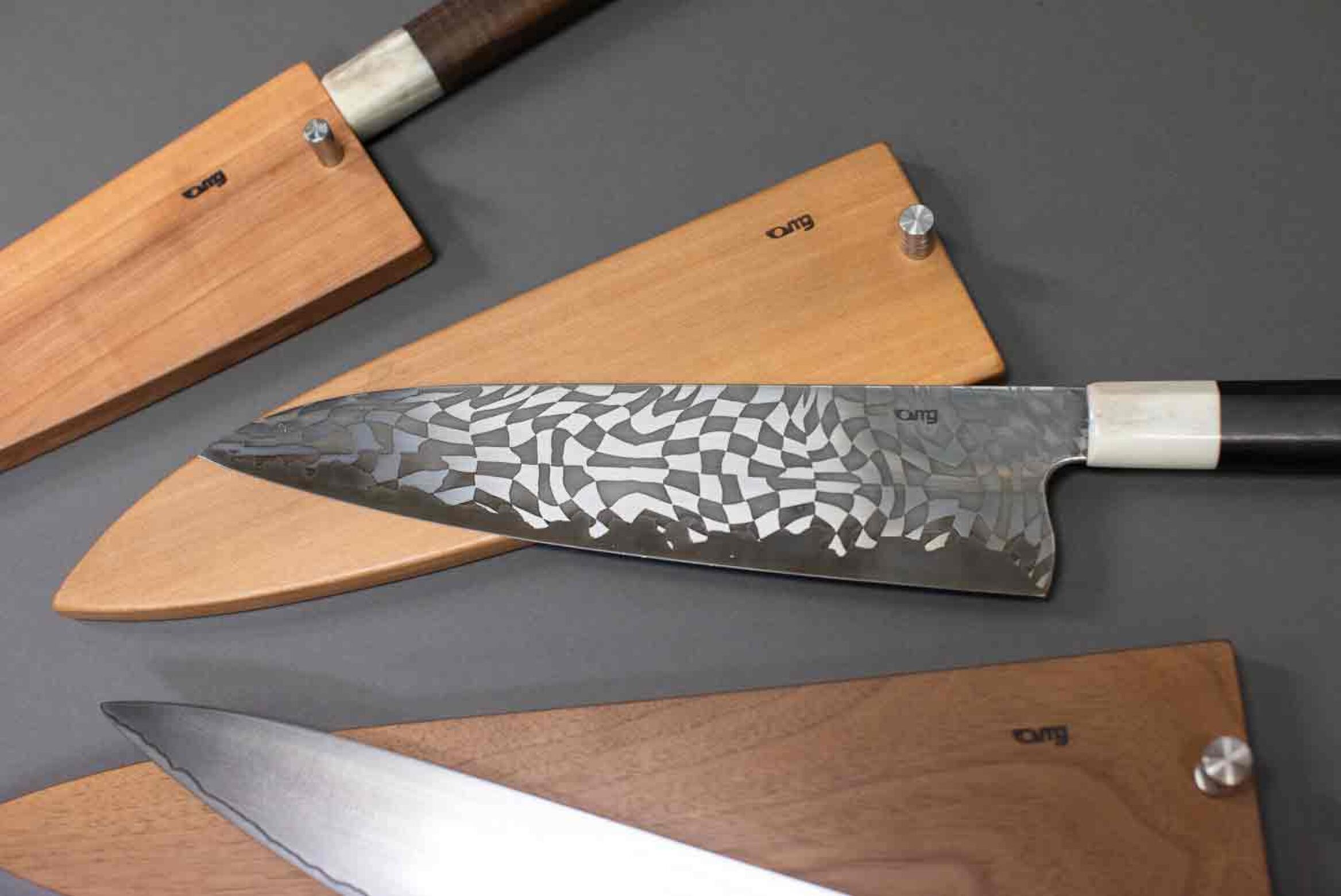
Working with other experts, you have actually developed a new type of steel for making even better knives. How can you help us to visualise that?
In recent years, we knife-makers have often had problems in getting hold of good steel. That is why I launched Guldimann Stahl. In collaboration with a friend who is a metallographer and other experts, we have created a new alloy called ApexUltra. We are still experimenting, but the initial results are very promising.
‘When such professions are lost, a lot of knowledge – and, with it, part of our culture – is lost too.’
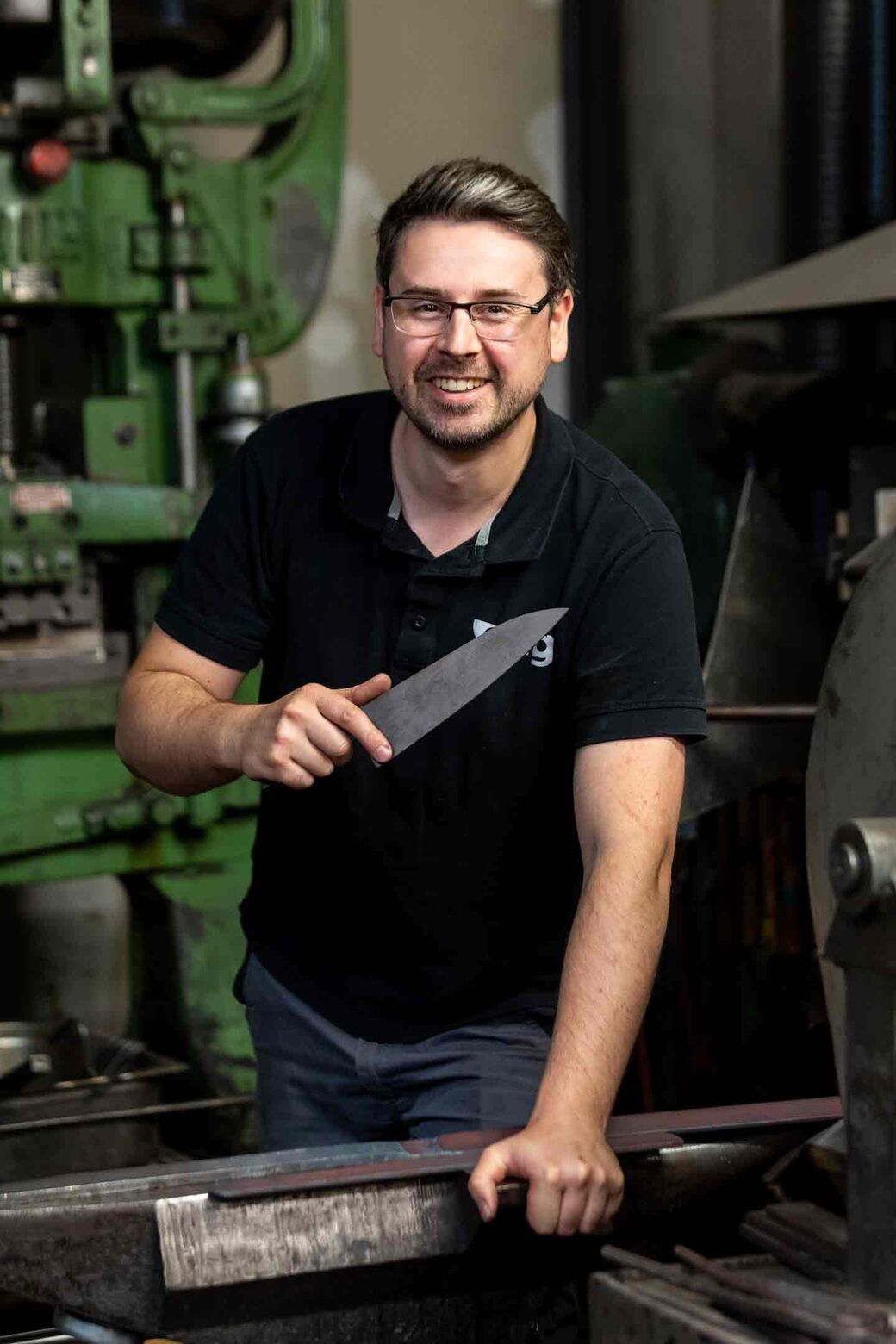
Have you noticed in recent years that people are taking a keener interest in old crafts?
That is certainly true. I am noticing that many people miss old crafts and want to encourage them or are simply sad that many things no longer exist. When such professions are lost, a lot of knowledge – and, with it, part of our culture – is lost too. That would be a great shame, and I think very many people take the same view as I do. In the past few years, a kind of turnaround has been happening. I actually think there are more knife-makers today than there were 20 years ago. That makes me hopeful.
